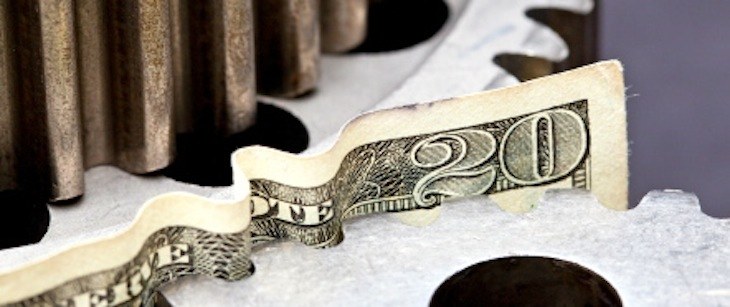Wages, salaries still down as recession continues
by September 9, 2020 4:38 pm 646 views

The longest expansion in U.S. economic history started in June 2009 and ended in February 2020 just prior to the COVID-19 pandemic shutdowns. Consumer spending crashed in March and April and began to rebound in May.
Despite gains in recent months, the recession continues, according to the National Bureau of Economic Research.
Personal income and spending have grown for three consecutive months; however, wages, salaries and rental incomes still lag below pre-COVID19 levels, according to the latest Bureau of Economic Analysis “Personal Income and Outlays” report.
The report provides a comprehensive look at sources of income as well as major expenditure items for households, providing insights into how COVID-19 continues to affect the economy. The Bureau of Economic Analysis is part of the U.S. Department of Commerce.
“The headline from the report was that personal income increased by 0.4% in July compared to the prior month,” economist John Anderson said. “Most pre-report estimates were calling for a slight decline, so the report was a generally positive surprise for the market. Adding to the positive tone, the increase in personal income was entirely accounted for by an increase in worker compensation as opposed to government transfers.”
Anderson is head of the agricultural economics and agribusiness department for the University of Arkansas System Division of Agriculture. He has been providing pandemic-related analyses of the economy since March.
“Total personal income is well above its pre-COVID level because government social benefits remain historically quite high,” he said. Federal COVID-related “transfer payments did decline in July compared to June, primarily the result of a decline in unemployment benefits, but they remain far above pre-COVID levels.”
For example, in January, government social benefits totaled $3.158 billion. In July, government social benefits amounted to $4.867 billion, an increase of 54%, due mostly to enhanced unemployment benefits.
Anderson said consumer spending in July is unusual.
“Spending on durable goods has been quite strong, considering that we are currently in a rather sharp recession,” he said. “Spending on big-ticket items that we would normally expect to struggle in a recessionary environment has grown markedly over the course of the year, and more specifically, since April.”
Anderson said, for example, spending on pleasure boats increased this year. He selected boats because they are “kind of an iconic discretionary purchase. However, the same basic point could be made with RVs or motorcycles as well. A lot more spending growth in these categories than I would expect in the middle of a ‘normal’ recession.”
“For example, expenditures on pleasure boats were 36% higher in July than in January,” Anderson said. “In contrast, over the course of the last major recession — the Great Recession in 2007-2010 — spending in that category fell by about half.”
When compared to July 2019, boat sales in July 2020 were up almost 31%. While the differences between boat sales in January and July may seem simply seasonal, the BEA statistics are adjusted for seasonality. For comparison, between January 2019 and July 2019, boat sales declined 4%.
Travel and leisure spending remained severely curtailed, Anderson noted.
“Until consumers regain the confidence to resume social exposure — at work and in recreational settings — and until social distancing guidelines allow such a resumption, spending in these categories will continue to lag,” he said.
The overall global outlook continues to be gloomy even as unemployment numbers drop and consumer spending increases. Global GDP is expected to shrink by 4.9% this year, the worst economic output number since the Great Depression, according to the International Monetary Fund in late June. The current recession is projected to continue into 2021.
